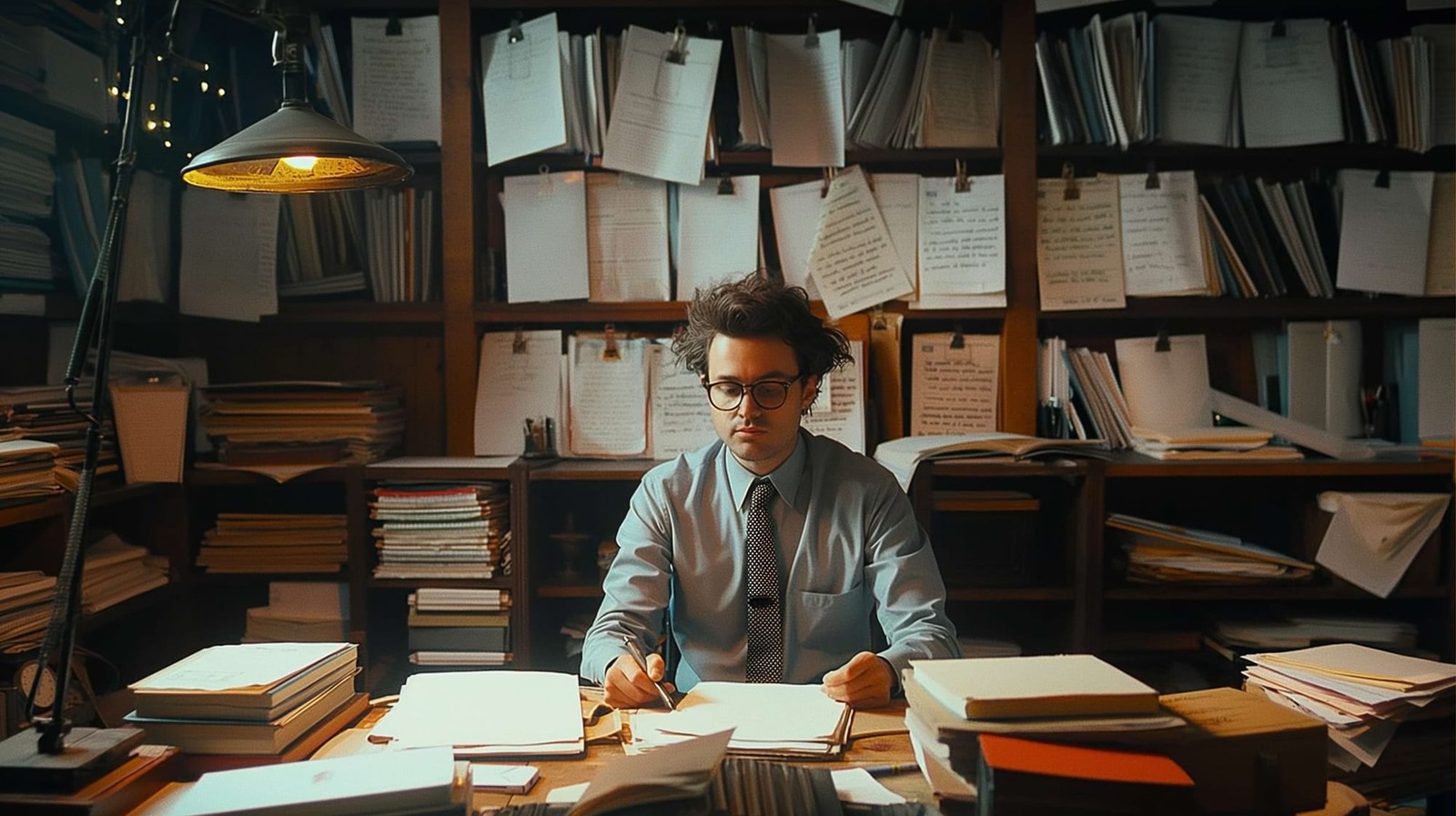Short Film Budget Hacks and Cost-Saving Strategies
Creating the first short film is a rewarding experience, but figuring out the financial aspects can be arduous. In this article, we've collected fundamental tenets of budgeting for short movies to navigate the intricate challenges of independent filmmaking.


As an ambitious storyteller venturing into the realm of short filmmaking, embarking on the inaugural project can be an exhilarating yet daunting quest. Amid creative vision and burning passion, one key aspect that is sometimes overlooked is the importance of financial management and budgeting. While short film budgets may seem modest, mastering short film budgeting is an essential first step toward a well-rounded understanding of financial planning in filmmaking. A meticulously crafted fiscal roadmap ensures your endeavor remains financially buoyant and aids in the reasonable allocation of resources, empowering you to breathe life into your artistic vision without compromising quality or incurring insurmountable debt.
Taika Waititi's Oscar-nominated short movie "Two Cars, One Night" (2003), was filmed early in his career. 👇
Understanding the Fundamentals of Film Budget Planning 🎬
Before diving into specifics, let's establish the building blocks of a solid film budget. Here are the essential components:
Pre-Production Expenditures
This encompasses outlays for script development, location scouting, casting, and procuring requisite permits or insurance coverage.
Production Disbursements
Account for crew remunerations, equipment rentals, set construction, transportation, and catering during the actual filming process.
Post-Production Outlay
Factor in expenses for editing, visual effects, sound design, music licensing, visual effects (VFX), film festival submission fees, and marketing collateral.
Contingency Reserve
Always allocate a fiscal buffer (typically 5-10% of the total budget) to account for unforeseen expenses or cost overruns.
Crafting a Budget for Short Film: Detailed Guidance 📝
Ready to turn your short film vision into reality? This guide will equip you with the knowledge to create a watertight budget.
🏗️ Laying the Groundwork
Solid pre-production planning is key to keeping costs under control. Scheduling rehearsals, scouting locations, and taking other preparatory steps upfront saves valuable time and resources later. Depending on your project's scope, some crew members may require extra prep time. Consulting with experienced filmmakers can provide valuable insights for refining your initial budget estimates.
📃 Script Breakdown and Expense Identification
The script is the blueprint for your budget. Start by meticulously dividing it into individual pages. Analyze each page to identify potential costs and estimate the production timeline. Filmustage can do that for you for seconds, saving hours of your time.

List the cast members and tentative filming dates to calculate talent costs. A general rule for micro-budget films is to shoot up to eight script pages per day.
Next, delve deeper and itemize production elements with precision. This includes props, wardrobe and costumes, hair and makeup requirements, vehicle needs, equipment rentals, stunts or special effects sequences, studio rental (if applicable), special effects costs (if applicable), and music licensing fees.
💸 Assigning Costs
With your comprehensive list in hand, it's time to assign specific figures to each item. Costs will depend on the number of shooting days required for each element.
Determine your total shooting days and optimize them for efficiency. Group script pages that necessitate similar resources together. Consider splitting your shoot days into studio and location-based schedules. It's easy to do with the Filmustage shooting scheduling tool.
Batch-filming scenes with large crowds or specialized equipment minimizes redundant expenditures.
It's always better to overestimate costs than underestimate them. Underestimation can lead to financial strain in mid-production and a scramble for additional funding.
💰 Accounting for Hidden Costs
Not all expenses are directly tied to the script — factor in costs that might not be immediately apparent.
This includes crew wages overtime, per diems (daily allowances), filming permits, location fees, and unforeseen expenses. A good starting point is crew costs. Even micro-budget films must have assigned department heads, regardless of whether the director and other team members perform multiple functions.
Travel, transportation, and accommodation for cast and crew might also be necessary. Finally, calculate catering costs by estimating food expenses per person per shooting day.
✂️ Post-Production Budget
Post-production, encompassing a range of tasks, typically accounts for 20-25% of your total budget. Here are the key cost categories:
- Sound Design and Editing: This is often the most time-consuming and expensive aspect of post-production. Get quotes from editors and factor editing time into your schedule and budget. Consider hiring a professional sound engineer for optimal audio quality.
- Visual Effects: The cost of visual effects depends on complexity.
- Color Grading: This standard practice ensures consistent color tones and a visually cohesive aesthetic.
💻 Leverage Film Budgeting Software
Having meticulously researched and compiled your budget, it's time to use dedicated film budgeting software. This streamlines tracking, sharing, and generating reports, minimizing errors and allowing for precise cost tracking throughout production.
- Swiftly and Efficiently Quantify Expenditures: with the comprehensive identification and meticulous categorization of every scripted element, Filmustage streamlines the budgeting endeavor by furnishing a transparent overview of the requisite production necessities.
- Automated Financial Blueprints: this cutting-edge functionality is currently under active development. Still, shortly, you will be empowered to seamlessly estimate the fiscal implications of each scene and the entire production process through the power of automation.
✅ Finalize Your Budget Report
Once you've entered data into your master budget, generate a report using a standardized template for consistency.
🏆 Bonus Tip: Festival Fees
As you plan your budget, don't forget about film festival submissions! These prestigious events showcase your work to a wider audience and industry professionals, potentially launching your filmmaking career. Though there's no set amount, a recommended allocation is 1-3% of your total budget for festival fees. While it may seem significant, consider it an investment in your film's future success. By strategically allocating funds for festival submissions, you increase the chances of your masterpiece gaining the recognition it deserves.
Mastering the Art of Scheduling and Contingency Planning 📅
While having a comprehensive overall budget is essential to keeping a firm grip on filming costs, creating a well-crafted schedule is another crucial aspect of maximizing your funding's efficiency.
Diligent planning can help curtail costs associated with accommodation, crew compensation, per diems, and other ancillary expenses.
Essentially, the cost of filming is inextricably linked to your shooting days; the fewer principal shooting days you require, the higher your chances of staying within your budgetary constraints and ensuring that your next project secures the necessary financial backing.
💰 Always Have a Contingency Plan (and Budget)
In addition to a well-thought-out contingency plan, allocating a dedicated budget for unforeseen circumstances is imperative. You need to earmark a financial cushion specifically designed to deal with unanticipated problems that may arise during your production.
First, thoughtfully consider the potential scope of unexpected expenses. This exercise will help ensure that you're adequately covered for any eventuality.
Loss and damage should also be factored into your budget. The budget must account for any damage or loss incurred to equipment used during production.
🛡️ Production Insurance: A Non-Negotiable Imperative
Obtaining comprehensive production insurance is an absolute necessity, as it will safeguard your project in the event of any unforeseen damage, loss, or liability. You'll need to secure permits, rent equipment, and formalize agreements with your desired locations. Additionally, it's crucial to extend coverage to your cast and crew, shielding them from potential risks or liabilities.
🎯 Be Realistically Pragmatic
When crafting your budget, it's imperative to adopt a pragmatic and realistic approach. Strive to provide accurate figures to the best of your ability. This proactive measure ensures that your production doesn't suffer the consequences of gross underestimation or overambitious projections.
💼 Budget Filmmaking: A Demanding Yet Rewarding Endeavor
It's important to acknowledge that budget filmmaking is not a pursuit for the faint of heart. It demands a substantial investment of research and forethought to navigate the intricate path to success. You'll need to meticulously consider every aspect of the process, from inception to completion.
✨ When crafting your budget, allocating more funds than you initially anticipate needing is advisable. This prudent approach is crucial to avoiding the potential pitfall of having to put your project on indefinite hold should you find yourself exceeding your initial budgetary projections.

Funding Your Short Film 💰📽️
Independent filmmaking thrives on resourcefulness. Here are some funding avenues to consider:
- Personal Investment: Bootstrapping your project with your funds is a common starting point, especially for micro-budget films.
- Crowdfunding for films: Platforms like Kickstarter and Indiegogo allow you to raise funds directly from the public by offering incentives in return for contributions. This approach can build pre-release buzz and engage your audience. For more information about crowdfunding platforms go here.
- Grants: Research film grants offered by government bodies, arts organizations, or private foundations. These often have specific eligibility criteria and application processes.
- Sponsorships: Partnering with local businesses can provide financial support and product placement opportunities within your film. Explore businesses relevant to your film's theme or target audience.
Cost-Saving Strategies 💡📉
Even with a limited budget, you can achieve impressive results. Here are some practical tips to stretch your film budget further:
- Leverage Student Discounts: If you're a student filmmaker, take advantage of discounts on equipment rentals, software, and other resources offered by many vendors.
- Barter Services: Explore opportunities to trade services with other creatives, such as photographers, musicians, or artists, to reduce costs.
- Utilize Free Resources: Investigate free or low-cost props, and costumes available in your community or through online platforms.
- Embrace Digital Workflows: Opt for digital distribution and promotion strategies, which can be more cost-effective than traditional physical media.
- Recruit Volunteer Crew: While it's important to fairly compensate key crew members, consider enlisting the help of enthusiastic volunteers, especially if you're offering valuable experience in return.
- Location Scouting: Utilize free or permit-free locations like public parks, friends' apartments, or even your own home. Think creatively and explore unconventional settings that complement your story.
- Take advantage of Minimalism: A minimalist approach to set design, props, and wardrobe can be visually striking and reduce production costs. Consider utilizing found objects or borrowing equipment from friends or film schools.
- Master the "Do-It-Yourself" principle: Learn basic skills like sound recording, lighting setup, or basic editing. While some roles require professional expertise, there's always room for DIY solutions in independent filmmaking.
✨ The art of economical filmmaking lies in transforming limitations into possibilities. By mastering cost management for filmmakers, even the most shoestring budget can be stretched to produce a visually compelling short film.
Helping Hand in Managing Film Finances 🎬🤝
A well-crafted budget is a blueprint that empowers you to actualize your creative vision while laying the foundation for future filmmaking endeavors.
By accurately planning expenses, exploring creative financing options, and implementing cost-saving strategies, you can transform your vision into reality.
Filmustage: Your Budget-Friendly Filmmaking Partner
Filmustage appreciates the unique vision of independent filmmakers and strives to provide tools that streamline the filmmaking process.
Filmustage helps you:
- Break Down Your Script into elements (props, characters, locations) in seconds, allowing for a more accurate cost estimation.
- Determine Location Filming Days with Schedule Tool: ️ Precisely determine the number of shoot days required at each filming location to streamline scheduling and resource allocation.
- Identify Potential Risks During Script Analysis and suggest preventative measures, saving you from unforeseen expenses.
- Collaborate Easily with your team through Team Access.
Create a budget that expands your vision rather than limits it - Filmustage is ready to help you cope with the financial complexities of film production.
From Breakdown to Budget in Clicks
Save time, cut costs, and let Filmustage’s AI handle the heavy lifting — all in a single day.